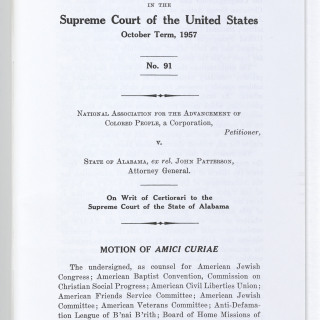Associational Privacy 1958
Throughout the South, officials sought to discredit the National Association for the Advancement of Colored People (NAACP) since it threatened white supremacy. In 1956, Alabama ordered the review of the organization’s documents, including membership lists. The NAACP refused to disclose its members.
In a unanimous decision, the Supreme Court sided with the NAACP and formally recognized a constitutional right to freedom of association. The forced disclosure of membership lists violated NAACP members’ right “to pursue their lawful private interests privately and to associate freely with others.” By recognizing the importance of confidential membership data, especially among unpopular groups, the NAACP v. Alabama decision furthered informational privacy rights.

